-
 Bitcoin
Bitcoin $107,247.2038
-0.18% -
 Ethereum
Ethereum $2,424.7947
0.34% -
 Tether USDt
Tether USDt $1.0003
-0.02% -
 XRP
XRP $2.1171
-3.33% -
 BNB
BNB $645.6618
0.06% -
 Solana
Solana $141.5898
-1.32% -
 USDC
USDC $0.9998
0.00% -
 TRON
TRON $0.2710
-0.41% -
 Dogecoin
Dogecoin $0.1602
-2.99% -
 Cardano
Cardano $0.5553
-2.28% -
 Hyperliquid
Hyperliquid $36.3019
-2.42% -
 Bitcoin Cash
Bitcoin Cash $491.7212
2.04% -
 Chainlink
Chainlink $13.0810
-0.23% -
 Sui
Sui $2.6080
-5.06% -
 UNUS SED LEO
UNUS SED LEO $9.0040
-0.05% -
 Stellar
Stellar $0.2350
-3.06% -
 Avalanche
Avalanche $17.2294
-2.31% -
 Toncoin
Toncoin $2.8075
-1.05% -
 Shiba Inu
Shiba Inu $0.0...01121
-3.43% -
 Litecoin
Litecoin $84.2215
-0.32% -
 Hedera
Hedera $0.1429
-4.88% -
 Monero
Monero $312.2199
-0.90% -
 Dai
Dai $0.9997
-0.01% -
 Ethena USDe
Ethena USDe $0.9999
-0.02% -
 Polkadot
Polkadot $3.2973
-2.60% -
 Bitget Token
Bitget Token $4.4742
3.12% -
 Pi
Pi $0.5631
-10.10% -
 Uniswap
Uniswap $6.7817
-2.06% -
 Pepe
Pepe $0.0...09252
-3.74% -
 Aave
Aave $251.3830
-2.24%
How to predict the direction when the MACD double lines are glued together and not separated?
When the MACD lines are glued together, it signals low momentum and market indecision, often seen during crypto consolidations.
Jun 27, 2025 at 04:30 am
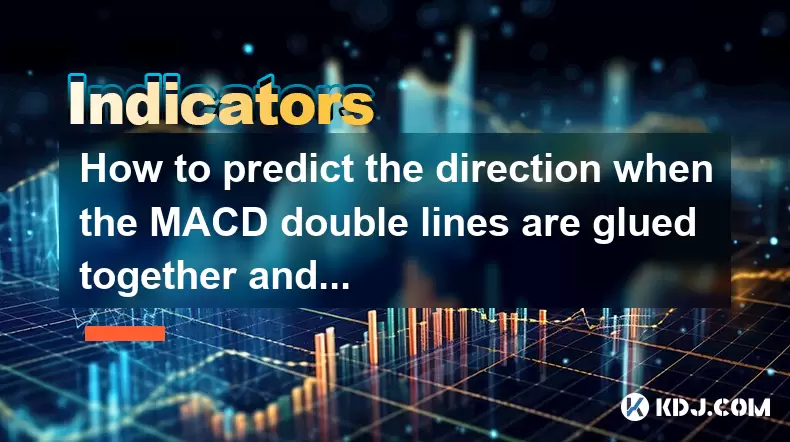
Understanding the MACD Indicator and Its Components
The Moving Average Convergence Divergence (MACD) is a popular technical indicator used in cryptocurrency trading. It consists of three main components: the MACD line, the signal line, and the histogram. The MACD line is calculated by subtracting the 26-period Exponential Moving Average (EMA) from the 12-period EMA. The signal line is typically a 9-period EMA of the MACD line. When these two lines are glued together or very close, it indicates a period of low momentum and potential consolidation.
In crypto markets, where volatility is high, this scenario can be misleading. Traders often misinterpret the lack of separation as a sign of weakness or strength when, in reality, it may just reflect indecision among market participants. This makes it crucial to analyze other supporting indicators and price action before making a directional prediction.
Why the MACD Double Lines Glue Together
When the MACD line and signal line stick closely together, it suggests that the short-term momentum is nearly equal to the longer-term average. In such situations, traders should not rely solely on the MACD for predictions. Instead, they should look at additional tools like volume, support/resistance levels, and candlestick patterns.
One common reason for this phenomenon is low trading activity or sideways movement in the market. For example, during a consolidation phase in BTC/USDT or ETH/USDT pairs, the MACD double lines will appear glued because there's no strong directional bias. This does not mean the trend has ended; rather, it implies that the market is taking a pause before potentially resuming its previous direction or reversing.
Steps to Analyze Price Action During MACD Line Closeness
- Identify key support and resistance levels around the current price.
- Observe candlestick formations near those levels — bullish or bearish patterns can give clues about possible breakouts.
- Use volume analysis to confirm if buyers or sellers are gaining control.
- Look at the MACD histogram — even if the lines are close, a growing histogram might suggest increasing momentum.
- Check higher timeframes (e.g., 4-hour or daily charts) to understand broader trends.
These steps help traders avoid false signals generated by the MACD alone. For instance, if the price is near a strong support level and the histogram starts expanding upwards, it could indicate an upcoming bullish move despite the MACD lines being stuck together.
Combining Other Indicators with MACD for Better Accuracy
Relying only on the MACD during periods of line closeness can lead to poor decision-making. To enhance accuracy, consider integrating complementary indicators:
- Relative Strength Index (RSI): Helps identify overbought or oversold conditions. If RSI is in oversold territory while the MACD lines are glued, it might hint at a potential reversal.
- Bollinger Bands: Show volatility contraction and expansion. A tight band with glued MACD lines could precede a breakout.
- Volume Profile: Highlights areas of high interest. If the price approaches a value area with low MACD divergence, it might bounce or break through.
- Fibonacci Retracement Levels: Useful for identifying potential turning points where the price might resume its trend after consolidation.
By combining these tools, traders can form a more reliable hypothesis about the next price movement when the MACD double lines are not separated.
Practical Example Using a Cryptocurrency Chart
Let’s take a real-world scenario involving BTC/USDT on a 1-hour chart. Suppose the MACD lines have been glued together for several candles, indicating weak momentum. At the same time, Bitcoin is trading near the 0.618 Fibonacci retracement level from the last major rally.
You notice that the RSI is hovering around 30, suggesting oversold conditions. Additionally, the volume profile shows heavy concentration at the current price level. These signs point toward a possible bounce. However, since the MACD lines are still not diverging, you wait for confirmation.
Suddenly, a bullish engulfing candle forms, and the MACD histogram begins to expand upward. Now, the MACD line crosses above the signal line slightly, confirming a shift in momentum. You enter a long trade with a stop below the recent swing low and target the next Fibonacci level at 0.5 retracement.
This example demonstrates how to interpret and act upon market conditions when the MACD double lines remain glued but other indicators suggest a directional bias.
Frequently Asked Questions
Q: What does it mean when the MACD lines stay glued for too long?
A: Prolonged glue-like behavior between the MACD and signal line usually reflects a lack of momentum and indecision in the market. This can happen during consolidation phases or before major news events that cause uncertainty.
Q: Can I use the MACD histogram alone to predict direction during line closeness?
A: While the histogram provides insights into momentum changes, it should not be used in isolation. A growing histogram without line separation might suggest building pressure, but confirmation from other tools is necessary before predicting direction.
Q: Is it safe to trade breakouts when the MACD lines are glued?
A: Trading breakouts during such periods can be risky due to false signals and whipsaws. It’s better to wait for confirmation from candlestick patterns, volume surges, or multi-timeframe alignment before entering a trade.
Q: How do I adjust my trading strategy when MACD lines are stuck together?
A: Shift focus to price action and range-bound strategies. Look for key levels, monitor order flow, and consider using options or derivatives if available. Avoid aggressive entries until clear momentum returns and the MACD lines begin to separate again.
Disclaimer:info@kdj.com
The information provided is not trading advice. kdj.com does not assume any responsibility for any investments made based on the information provided in this article. Cryptocurrencies are highly volatile and it is highly recommended that you invest with caution after thorough research!
If you believe that the content used on this website infringes your copyright, please contact us immediately (info@kdj.com) and we will delete it promptly.
- Ruvi AI vs. Tron: The Race to the $1 Mark and Beyond
- 2025-06-27 06:50:12
- Tron vs. Ruvi AI: Can AI Tokens Outshine the Crypto Veteran? 50% Up!
- 2025-06-27 07:10:12
- Bitcoin: Michael Saylor's Enduring Value Storage Thesis
- 2025-06-27 07:10:12
- PowerTrade: Altcoin Options and Leverage Revolutionizing Crypto Trading
- 2025-06-27 07:30:12
- Fartcoin, Buying a Home, and Crypto: A Hilarious (and Terrifying) Combination?
- 2025-06-27 07:30:12
- Coinbase, CFTC, and Perpetual Futures: A New Era for US Crypto Trading
- 2025-06-27 07:50:12
Related knowledge
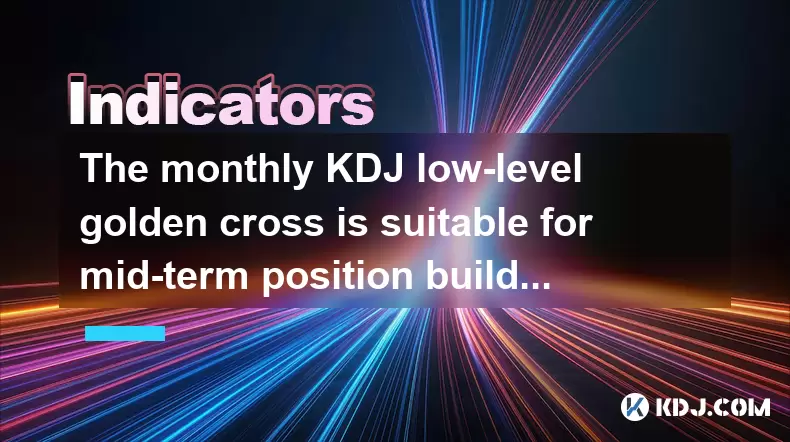
The monthly KDJ low-level golden cross is suitable for mid-term position building?
Jun 27,2025 at 03:14am
Understanding the Monthly KDJ IndicatorThe KDJ indicator, also known as the stochastic oscillator, is a momentum tool widely used in technical analysis within the cryptocurrency market. It consists of three lines: the K line, the D line, and the J line. These lines help traders identify overbought or oversold conditions, potential trend reversals, and e...
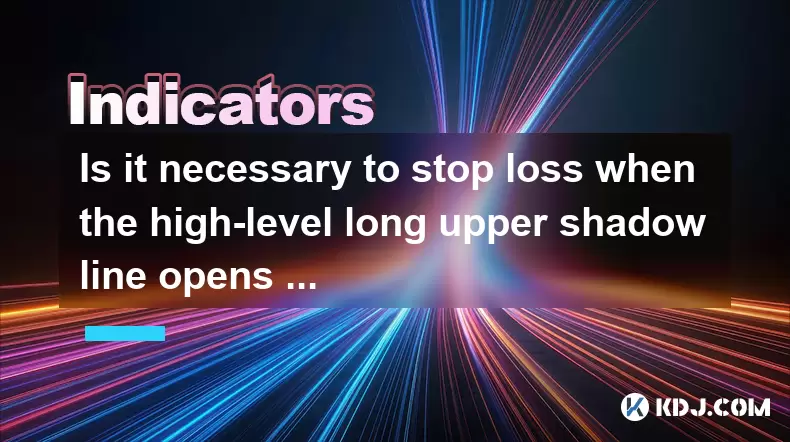
Is it necessary to stop loss when the high-level long upper shadow line opens low the next day?
Jun 27,2025 at 08:22am
Understanding the High-Level Long Upper Shadow LineIn technical analysis, a long upper shadow line refers to a candlestick pattern where the price moves significantly higher during the session but closes much lower, forming a long wick on the top. When this occurs at a high level, it suggests strong resistance and potential reversal. This type of candle...
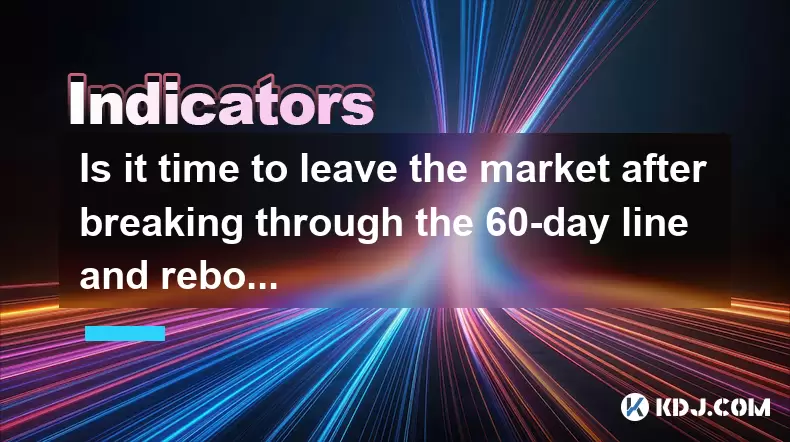
Is it time to leave the market after breaking through the 60-day line and rebounding?
Jun 27,2025 at 06:29am
Understanding the 60-Day Moving Average in CryptocurrencyIn cryptocurrency trading, technical indicators play a pivotal role in decision-making. Among these, the 60-day moving average is widely used by both novice and experienced traders. This indicator calculates the average price of an asset over the last 60 days and helps identify long-term trends. W...
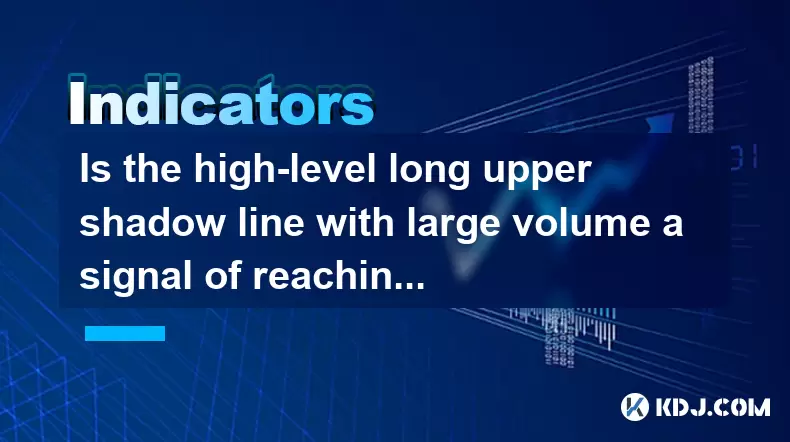
Is the high-level long upper shadow line with large volume a signal of reaching the top?
Jun 27,2025 at 04:50am
Understanding the High-Level Long Upper Shadow LineIn technical analysis within the cryptocurrency market, candlestick patterns play a crucial role in predicting price movements. A high-level long upper shadow line, often referred to as a shooting star or inverted hammer, is a specific type of candlestick pattern that appears at the top of an uptrend. T...
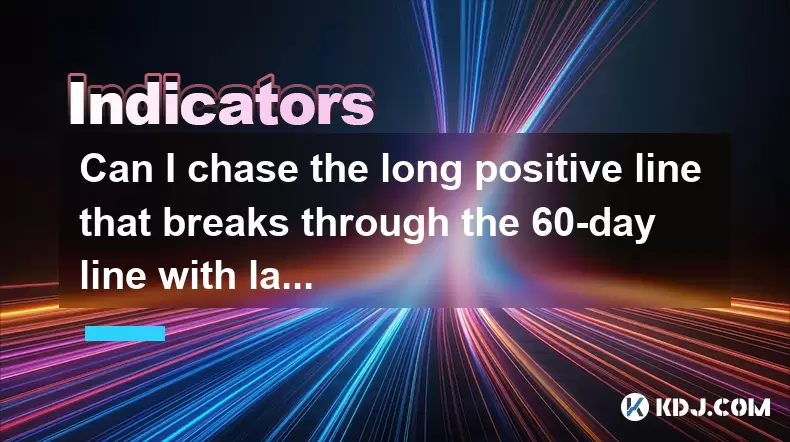
Can I chase the long positive line that breaks through the 60-day line with large volume at the bottom?
Jun 27,2025 at 07:08am
Understanding the 60-Day Line in Cryptocurrency TradingIn cryptocurrency trading, technical analysis plays a pivotal role in identifying potential entry and exit points. One of the commonly used tools is the 60-day moving average, often referred to as the 60-day line. This indicator smooths out price data over the last 60 days and helps traders determin...
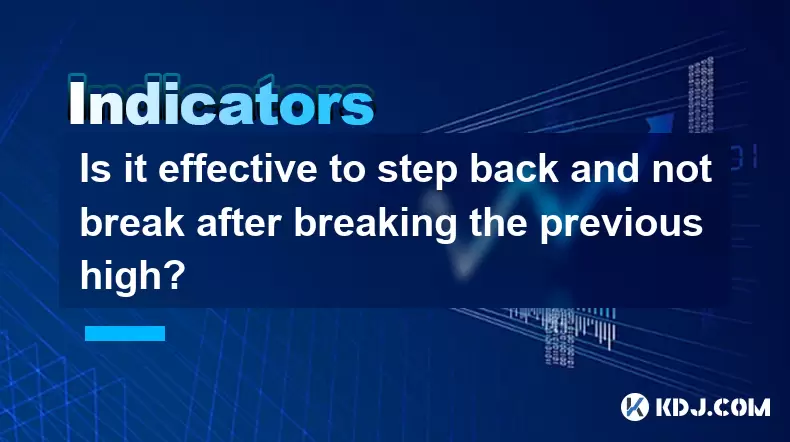
Is it effective to step back and not break after breaking the previous high?
Jun 27,2025 at 05:01am
Understanding the Concept of Breaking Previous HighsIn cryptocurrency trading, breaking a previous high refers to when an asset's price surpasses its last recorded peak. This is often seen as a sign of strong momentum and bullish sentiment. Traders closely monitor these levels because they can indicate potential trend continuation or reversal points. Wh...

The monthly KDJ low-level golden cross is suitable for mid-term position building?
Jun 27,2025 at 03:14am
Understanding the Monthly KDJ IndicatorThe KDJ indicator, also known as the stochastic oscillator, is a momentum tool widely used in technical analysis within the cryptocurrency market. It consists of three lines: the K line, the D line, and the J line. These lines help traders identify overbought or oversold conditions, potential trend reversals, and e...

Is it necessary to stop loss when the high-level long upper shadow line opens low the next day?
Jun 27,2025 at 08:22am
Understanding the High-Level Long Upper Shadow LineIn technical analysis, a long upper shadow line refers to a candlestick pattern where the price moves significantly higher during the session but closes much lower, forming a long wick on the top. When this occurs at a high level, it suggests strong resistance and potential reversal. This type of candle...

Is it time to leave the market after breaking through the 60-day line and rebounding?
Jun 27,2025 at 06:29am
Understanding the 60-Day Moving Average in CryptocurrencyIn cryptocurrency trading, technical indicators play a pivotal role in decision-making. Among these, the 60-day moving average is widely used by both novice and experienced traders. This indicator calculates the average price of an asset over the last 60 days and helps identify long-term trends. W...

Is the high-level long upper shadow line with large volume a signal of reaching the top?
Jun 27,2025 at 04:50am
Understanding the High-Level Long Upper Shadow LineIn technical analysis within the cryptocurrency market, candlestick patterns play a crucial role in predicting price movements. A high-level long upper shadow line, often referred to as a shooting star or inverted hammer, is a specific type of candlestick pattern that appears at the top of an uptrend. T...

Can I chase the long positive line that breaks through the 60-day line with large volume at the bottom?
Jun 27,2025 at 07:08am
Understanding the 60-Day Line in Cryptocurrency TradingIn cryptocurrency trading, technical analysis plays a pivotal role in identifying potential entry and exit points. One of the commonly used tools is the 60-day moving average, often referred to as the 60-day line. This indicator smooths out price data over the last 60 days and helps traders determin...

Is it effective to step back and not break after breaking the previous high?
Jun 27,2025 at 05:01am
Understanding the Concept of Breaking Previous HighsIn cryptocurrency trading, breaking a previous high refers to when an asset's price surpasses its last recorded peak. This is often seen as a sign of strong momentum and bullish sentiment. Traders closely monitor these levels because they can indicate potential trend continuation or reversal points. Wh...
See all articles
























































































